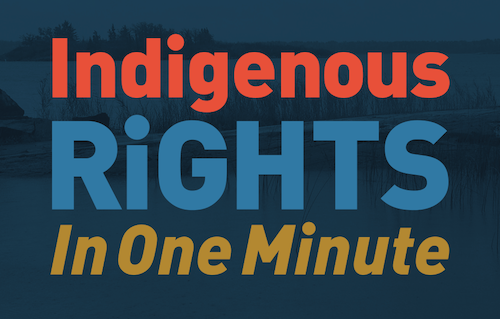What was Required to Create a Historical Treaty?
A historical treaty between Indigenous Peoples and the Crown was created when each side intended to create legally binding obligations and their discussions were serious and dignified.
The Crown has a long history of denying the existence of historical treaties with Indigenous Peoples. With the change to the Indian Act in 1951 which removed the ban on First Nations hiring lawyers to defend their rights, Indigenous Peoples went to court to have their treaties recognized.
Their first major victory was the White and Bob British Columbia Court of Appeal decision in 1964. It confirmed the 1854 agreement between the Snuneymuxw and Governor Douglas of the Hudson’s Bay Company was a treaty and that the treaty rights still existed.
Later Supreme Court of Canada decisions further developed the law. Instead of relying on the international law of treaties, the Court developed its own principles based on a broad and liberal interpretation that wasn’t overly legalistic and considered the specific historical circumstances.
Over the objections of the Crown, the courts have confirmed the existence of various treaties including the Peace and Friendship Treaty of 1752 between the British and the Mi’kmaw (Simon, Marshall) and a one paragraph letter signed by British General Murrary in 1760 (shortly after the Battle of Quebec) guaranteeing rights to the Huron-Wendat (Sioui).
Regrettably, even when First Nations win court decisions confirming the existence of their treaties with the Crown, they continue to struggle to have the Crown respect their treaty rights, e.g. Mi’kmaw commercial fishing rights under the Peace and Friendship Treaty of 1752 (Marshall).
Have a question about Indigenous rights? Submit your questions here.
Did you miss last month's post? Check out Bruce's answers to other questions here.
Bruce McIvor, lawyer and historian, is partner at First Peoples Law LLP. He is also an Adjunct Professor at the University of British Columbia’s Allard School of Law where he teaches the constitutional law of Aboriginal and Treaty rights. A member of the bar in British Columbia and Ontario, Bruce is recognized nationally and internationally as a leading practitioner of Aboriginal law in Canada. Bruce's ancestors took Métis scrip at Red River in Manitoba. He holds a law degree, a Ph.D. in Aboriginal and environmental history, is a Fulbright Scholar and author of Standoff: Why Reconciliation Fails Indigenous People and How to Fix It. He is a member of the Manitoba Métis Federation.
Follow Bruce on LinkedIn and Twitter
First Peoples Law is a law firm dedicated to defending and advancing the rights of Indigenous Peoples in Canada. We work closely with First Nations to defend their Aboriginal title, rights and Treaty rights, uphold their Indigenous laws and governance and ensure economic prosperity for their members.
Sign up for our First Peoples Law Report for your latest news on Indigenous rights

